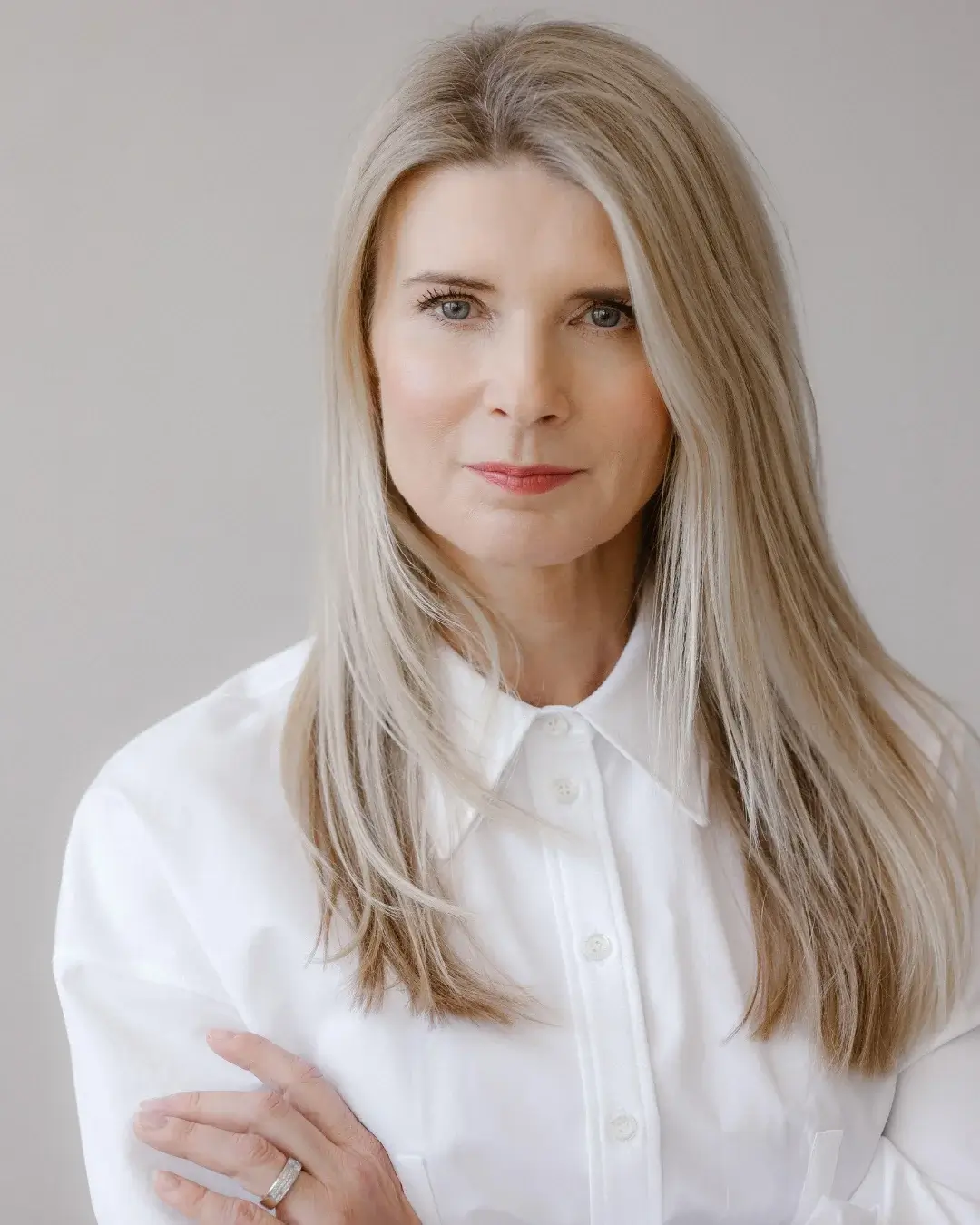-
Other audit services
We help clients with the application and use of foreign financial aid of EU and other funds and help prepare financial reports.
-
Audit calculator
The calculator will answer if the company's sales revenue, assets or number of employees exceed the limit of an inspection or audit.
-
Payroll and related services
We perform payroll accounting for companies whether they employ a few or hundreds of employees.
-
Tax accounting
Grant Thornton Baltic's experienced tax specialists support accountants and offer reasonable and practical solutions.
-
Reporting
We prepare annual reports in a timely manner. We help to prepare management reports and various mandatory reports.
-
Consolidation of financial statements
Our experienced accountants and advisors help you prepare consolidation tables and make the consolidation process more efficient.
-
Consultancy and temporary staff
Our experienced specialists advise on more complex accounting transactions, rectify poor historic accounting, and offer the temporary replacement of an accountant.
-
Outsourced CFO service
Our CFO service is suitable for companies of all sizes and in all industries. We offer services to our clients in the required amount and competences.
-
Assessment of accounting processes
We help companies to implement accounting practices that are in compliance with local and international standards.
-
Accounting services for small businesses
We offer affordable service for small businesses. We help organize processes as smartly and cost-effectively as possible.
-
Cryptocurrency accounting
We keep up with blockchain technology to serve and advise crypto companies. We are supported by a network of colleagues in 130 countries.
-
Trainings and seminars
Our accountants have experience in all matters related to accounting and reporting. We offer our clients professional training according to their needs.

-
Business advisory
We offer legal support to both start-ups and expanding companies, making sure that all legal steps are well thought out in detail.
-
Fintech advisory
Our specialists advise payment institutions, virtual currency service providers and financial institutions.
-
Corporate advisory
We advise on legal, tax and financial matters necessary for better management of the company's legal or organizational structure.
-
Transaction advisory
We provide advice in all aspects of the transaction process.
-
Legal due diligence
We thoroughly analyze the internal documents, legal relations, and business compliance of the company to be merged or acquired.
-
In-house lawyer service
The service is intended for entrepreneurs who are looking for a reliable partner to solve the company's day-to-day legal issues.
-
The contact person service
We offer a contact person service to Estonian companies with a board located abroad.
-
Training
We organize both public trainings and tailor made trainings ordered by clients on current legal and tax issues.
-
Whistleblower channel
At Grant Thornton Baltic, we believe that a well-designed and effective reporting channel is an efficient way of achieving trustworthiness.

-
Business model or strategy renewal
In order to be successful, every company, regardless of the size of the organization, must have a clear strategy, ie know where the whole team is heading.
-
Marketing and brand strategy; creation and updating of the client management system
We support you in updating your marketing and brand strategy and customer management system, so that you can adapt in this time of rapid changes.
-
Coaching and development support
A good organizational culture is like a trump card for a company. We guide you how to collect trump cards!
-
Digital services
Today, the question is not whether to digitize, but how to do it. We help you develop and implement smart digital solutions.
-
Sales organisation development
Our mission is to improve our customers' business results by choosing the right focuses and providing a clear and systematic path to a solution.
-
Business plan development
A good business plan is a guide and management tool for an entrepreneur, a source of information for financial institutions and potential investors to make financial decisions.
-
Due diligence
We perform due diligence so that investors can get a thorough overview of the company before the planned purchase transaction.
-
Mergers and acquisitions
We provide advice in all aspects of the transaction process.
-
Valuation services
We estimate the company's market value, asset value and other asset groups based on internationally accepted methodology.
-
Forensic expert services
Our experienced, nationally recognized forensic experts provide assessments in the economic and financial field.
-
Business plans and financial forecasts
The lack of planning and control of cash resources is the reason often given for the failure of many businesses. We help you prepare proper forecasts to reduce business risks.
-
Outsourced CFO service
Our CFO service is suitable for companies of all sizes and in all industries. We offer services to our clients in the required amount and competences.
-
Reorganization
Our experienced reorganizers offer ways to overcome the company's economic difficulties and restore liquidity in order to manage sustainably in the future.
-
Restructuring and reorganisation
We offer individual complete solutions for reorganizing the structure of companies.
-
Corporate taxation
We advise on all matters related to corporate taxation.
-
Value added tax and other indirect taxes
We have extensive knowledge in the field of VAT, excise duties and customs, both on the national and international level.
-
International taxation
We advise on foreign tax systems and international tax regulations, including the requirements of cross-border reporting.
-
Transfer pricing
We help plan and document all aspects of a company's transfer pricing strategy.
-
Taxation of transactions
We plan the tax consequences of a company's acquisition, transfer, refinancing, restructuring, and listing of bonds or shares.
-
Taxation of employees in cross-border operations
An employee of an Estonian company abroad and an employee of a foreign company in Estonia - we advise on tax rules.
-
Tax risk audit
We perform a risk audit that helps diagnose and limit tax risks and optimize tax obligations.
-
Representing the client in Tax Board
We prevent tax problems and ensure smooth communication with the Tax and Customs Board.
-
Taxation of private individuals
We advise individuals on personal income taxation issues and, represent the client in communication with the Tax and Customs Board.
-
Pan-Baltic tax system comparison
Our tax specialists have prepared a comparison of the tax systems of the Baltic countries regarding the taxation of companies and individuals.
-
Internal audit
We assist you in performing the internal audit function, performing internal audits and advisory work, evaluating governance, and conducting training.
-
Internal Audit in the Financial Services Sector
We provide internal audit services to financial sector companies. We can support the creation of an internal audit function already when applying for a sectoral activity license.
-
Audit of projects
We conduct audits of projects that have received European Union funds, state aid, foreign aid, or other grants.
-
Prevention of money laundering
We help to prepare a money laundering risk assessment and efficient anti-money laundering procedures, conduct internal audits and training.
-
Risk assessment and risk management
We advise you on conducting a risk assessment and setting up a risk management system.
-
Custom tasks
At the request of the client, we perform audits, inspections and analyzes with a specific purpose and scope.
-
External Quality Assessment of the Internal Audit Activity
We conduct an external evaluation of the quality of the internal audit or provide independent assurance on the self-assessment.
-
Whistleblowing and reporting misconduct
We can help build the whistleblowing system, from implementation, internal repairs and staff training to the creation of a reporting channel and case management.
-
Information security management
We provide you with an information security management service that will optimise resources, give you an overview of the security situation and ensure compliance with the legislation and standards.
-
Information security roadmap
We analyse your organisation to understand which standards or regulations apply to your activities, identify any gaps and make proposals to fix them.
-
Internal audit of information security
Our specialists help detect and correct information security deficiencies by verifying an organization's compliance with legislation and standards.
-
Third party management
Our specialists help reduce the risks associated with using services provided by third parties.
-
Information security training
We offer various training and awareness building programmes to ensure that all parties are well aware of the information security requirements, their responsibilities when choosing a service provider and their potential risks.
-
Digital Operational Resilience Act (DORA)
We will help you create a DORA implementation model that meets your company's needs and ensures that you meet the January 2025 deadline.

-
ESG advisory
We help solve issues related to the environment, social capital, employees, business model and good management practices.
-
ESG audit
Our auditors review and certify sustainability reports in line with international standards.
-
Sustainable investments
We help investors conduct analysis of companies they’re interested in, examining environmental topics, corporate social responsibility and good governance practices.
-
Sustainable tax behaviour
Our international taxation specialists define the concept of sustainable tax behaviour and offer services for sustainable tax practices.
-
ESG manager service
Your company doesn’t necessarily need an in-house ESG manager. This role can also be outsourced as a service.

-
Recruitment services – personnel search
We help fill positions in your company with competent and dedicated employees who help realize the company's strategic goals.
-
Recruitment support services
Support services help to determine whether the candidates match the company's expectations. The most used support services are candidate testing and evaluation.
-
Implementation of human resource management processes
We either assume a full control of the launch of processes related to HR management, or we are a supportive advisory partner for the HR manager.
-
Audit of HR management processes
We map the HR management processes and provide an overview of how to assess the health of the organization from the HR management perspective.
-
HR Documentation and Operating Model Advisory Services work
We support companies in setting up HR documentation and operational processes with a necessary quality.
-
Employee Surveys
We help to carry out goal-oriented and high-quality employee surveys. We analyse the results, make reports, and draw conclusions.
-
HR Management outsourcing
We offer both temporary and permanent/long-term HR manager services to companies.

-
Digital strategy
We help assess the digital maturity of your organization, create a strategy that matches your needs and capabilities, and develop key metrics.
-
Intelligent automation
We aid you in determining your business’ needs and opportunities, as well as model the business processes to provide the best user experience and efficiency.
-
Business Intelligence
Our team of experienced business analysts will help you get a grip on your data by mapping and structuring all the data available.
-
Cybersecurity
A proactive cyber strategy delivers you peace of mind, allowing you to focus on realising your company’s growth potential.
-
Innovation as a Service
On average, one in four projects fails and one in two needs changes. We help manage the innovation of your company's digital solutions!

Studies conducted in Estonia and other countries show that there are many female mid-level managers but women all too often hit a glass ceiling in trying to get to the highest tier of business leadership. Why is it that way, and are quotas the only way to break the glass?
We invited three people with experience in this field – Grant Thornton Baltic partner and head of legal Kristel Tiits, co-founder of Grünfin Triin Hertmann and leadership coach and longtime media executive Merle Viirmaa – to discuss.
But first, a few statistics. For 20 years, Grant Thornton, a business consultancy and auditing company operating in more than 130 countries, has been conducting an international survey that looks at the percentages of male and female executives at medium-sized enterprises, among other topics. Two decades ago, women made up less than 20% of senior management, but today the number is over one-quarter. Estonia has always stood out in this survey for its high share of female business leaders. Yet still, even Estonian women vying for senior executive posts, glass ceilings are not unheard of.
Grant Thornton Baltic partner Kristel Tiits says the existence of this barrier ceiling depends greatly on organizational culture and the potential executive themselves. She also points out that a certain kind of stereotypical thinking is loath to fade. “For example, at meetings attended by both men and women, it’s the women who often get the suggestion that they might take the minutes of the meeting, often with attached flattery like ‘you have better penmanship’ or ‘it will turn out better’. Tiits adds that a factor keeping more women from ascending to senior leadership is that a senior executive’s days are longer, they have to devote more time to work and shoulder greater responsibility. “As to women’s role in society, the assumption tends to be that women play a larger role in family life and have to be able to reconcile professional and home life.” She herself made it to a senior executive role one step at a time: she went from specialist to mid-level manager and then became an executive.

Kristel Tiits, Grant Thornton Baltic's Partner, Head of Legal. Photographer: Egert Kamenik
When will the glass ceiling shatter?
Management coach Merle Viirmaa says that women are well represented in the mid-level manager segment – this reflects her own experience and is also borne out by research. But the percentage of women in senior management is lower. “The more clout the company has, the likelier the trend is to hold true. Only 10% of Fortune 500 companies have a female CEO, for example. The good news is that things have got much better over the last 10 years. I also see major changes in the younger generation’s attitudes and ambitions and I’m certain that at least in the democratic world, the glass ceiling will be smashed in the next 10 years.”
How did the glass ceiling come to be in the first place? Merle Viirmaa says there are many reasons: women’s own behavioural patterns (such as wanting to be liked, perfectionism, not being perceived as a climber, shying away from being too assertive) and factors from the external environment (stereotypes, double standards and preference for masculine models in the management environment). “If I were asked what would be the one thing I would do to improve the situation, I would say: support young women! First of all, the future is in their hands. And second, there’s a lot of research that has shown how the self-confidence of young newly hired woman executives specifically falls dramatically in the first years,” emphasizes Viirmaa.
Co-founder of tech firm Grünfin, Triin Hertmann, says that the glass ceiling is well in evidence in Estonia but compared to the rest of the world, people here are pretty well off. “Sometimes, more traditional Western cultures leave the impression that engagement with women and their mobility toward business leadership positions is important, but actual decision-making processes under the surface speak otherwise. That’s why I like it in Estonia – in this country, a lot comes down to personal performance and sincerity, there is less of a two-faced policy and things are talked about the way they are.” Hertmann notes that Estonia was the first country to have women serving as president and prime minister simultaneously.

Triin Hertmann, CEO and co-founder of Grünfin. Photographer: Jake Farra
Men and women: both needed
Hertmann sums up by saying that an executive position is something a person has to want themselves and be ready to take action to pursue. “Of course, becoming an executive requires certain personality traits and motivation but that goes for both men and women,” says Hertmann. She herself spent most of her career working for fast-growing tech firms, including Skype and Wise, and says that the tech sector comes with opportunities to determine one’s own career path and move toward the person’s fields of interest as well as being a leader of people. Hertmann also cites the economic aspect, backing it up with a reference to research: “To give an example from the world of start-ups, it has been shown that if a company’s management includes women as well as men, the return for investors tends to be about twice better than the average[1], [2],” says Hertmann.
Yet Hertmann, Tiits and Viirmaa all note that they don’t want to leave the impression that women are better than men in leadership roles. What is important that people realize diversity’s advantages. Viirmaa, the executive coach, notes that neither women nor men are actually naturally better suited for a leadership role. Instead it comes down to differences that enrich and complement each other. “Companies and organizations that have a good male-female balance in senior management are more profitable, socially more responsible, have higher employee satisfaction and reference indexes and offer a better customer experience. The goal is diversity. Studies show that certain styles, patterns and models are more characteristic for women, but they are not superior or inferior,” says Viirmaa.
Tiits for her part also says that gender equality is important in management. “Teams that have both men and women in their executive ranks are often longer-lasting and manage innovation better. Involving women in business leadership is vital for all organizations that want to reap benefits from perspectives generated by a more diverse management, and a more supportive style of leadership that women bring to a position,” says Tiits. She mentions that on several occasions she resolved misunderstandings where a male executive didn’t take the nature of a problem very seriously or failed to grasp it but where the situation might have even culminated with a very good specialist leaving the company.
A quota is like putting a bandage on a gaping wound
But what to make of the EU directive that requires companies to increase the share of underrepresented genders in company supervisory boards to 40 per cent and on management boards to 33 per cent by July 2026?
Triin Hertmann is in favour of the quotas. “I believe that multifaceted teams are more successful in nearly everything they do. It’s not a bad thing if we need to get on the case of such companies a little. I’m totally sure that the supervisory boards and management boards who initially turn up their nose and take a scornful view of ‘quota women’ at first will soon see the positive effects on the company’s leadership culture and success. Soon it will be the new normal and no one will remember why it was ever different.”
Tiits says that the directive will ultimately give women greater chance of making it to the helm of major companies and improve the leadership culture at companies. Yet she also draws attention to the risks. “On the one hand, it’s certainly to be welcomed from the standpoint of gender balance, but do people really desire to be in the role of a ‘silent’ partner elected to management only to meet quota requirements and what voting rights does that entail? Plus, fining companies for not meeting the quota sounds like excessive bureaucracy.”

Viirmaa sees the quota system as a two-edged sword. “Yes, it will make our companies and society better. No, I don’t know any women who want to get promoted only thanks to a quota. I really hope common sense will prevail at companies and they will choose to support women, that will be a win-win for everyone. In countries that do have quotas (including race-based ones) we can see the uneasiness caused by quota-based promotions. A quota is like putting a bandage on a gaping wound.”
Merle Viirmaa, Executive Coach. Photographer: Triin Maasik
Role models are everywhere
When we asked Kristel Tiits, Merle Viirmaa and Triin Hertmann to highlight outstanding female Estonian executives, they did not have to think for long. “Without a doubt our Chancellor of Justice, Ülle Madise – always articulate and known for coming out with very thought-provoking and wise positions,” says Tiits.
Viirmaa highlighted the chairwoman of the management board of Ekspress Group, Mari-Liis Rüütsalu. “A brilliant, smart, broad-minded and big-hearted woman. A leader who is an elegant fusion of rigour and softness. Someone who achieves very good results, engaging people in a way where the people know and sense that she really cares about them and supports them. But I’m also glad that Mari-Liis hasn’t started carrying a cross in terms of where she feels she has to be a model to all women and to represent all females at every meeting,” says Viirmaa.
Hertmann says that she’s especially impressed by female execs who are more visible in the media, who express opinions on salient topics for society and inspire other women by example. “In the tech sector, I see women executives each and every day soldiering through fire and water, while taking a very caring attitude toward their teams. I have a lot of admiration for people like Kaidi Ruusalepp (Funderbeam), Kristel Kruustükk (Testlio) and Kadri Kiisel (LHV Pank), and naturally the other co-founder of my own company Grünfin, Karin Nemec. I’m an angel investor and have invested into 30 start-ups and of my last 10 investments, eight went to female founders. I have a very high appreciation for all of them as well,” says Hertmann.
[1] www.phoenixbrands.co/stories/why-you-should-invest-in-female-founded-startups.
[2] https://www.bcg.com/publications/2018/why-women-owned-startups-are-better-bet.
To keep abreast of what is happening in the economy, to receive timely information about changes in the law and the most important development trends in tax, legal and other important areas of business, subscribe to our newsletter.








